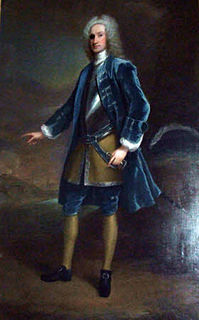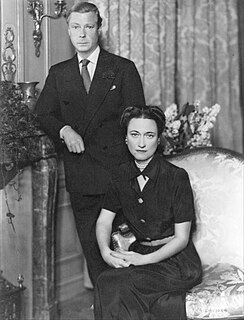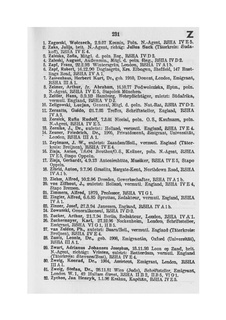
The Battle of Blenheim, fought on 13 August 1704, was a major battle of the War of the Spanish Succession. The overwhelming Allied victory ensured the safety of Vienna from the Franco-Bavarian army, thus preventing the collapse of the Grand Alliance.

Walter Friedrich Schellenberg was a German SS functionary during the Nazi era. He rose through the ranks of the SS, becoming one of the highest ranking men in the Sicherheitsdienst (SD) and eventually assumed the position as head of foreign intelligence for Nazi Germany following the abolition of the Abwehr in 1944.

Field Marshal Sir Robert Rich, 4th Baronet was a British cavalry officer. As a junior officer he fought at the Battle of Schellenberg and at the Battle of Blenheim during the War of the Spanish Succession. He was then asked the raise a regiment to combat the threat from the Jacobite rising of 1715. He also served with the Pragmatic Army under the Earl of Stair at the Battle of Dettingen during the War of the Austrian Succession. As a Member of Parliament he represented three different constituencies but never attained political office.

The Tank, Infantry, Mk IV (A22) Churchill was a British heavy infantry tank used in the Second World War, best known for its heavy armour, large longitudinal chassis with all-around tracks with multiple bogies, its ability to climb steep slopes, and its use as the basis of many specialist vehicles. It was one of the heaviest Allied tanks of the war.

William Cadogan, 1st Earl Cadogan, was an Irish-born British army officer whose active military service began during the Williamite War in Ireland in 1689 and ended with the suppression of the 1715 Jacobite Rebellion. A close associate and confidante of the Duke of Marlborough, he was also a diplomat and Whig politician who sat in the English and British House of Commons from 1705 until 1716 when he was raised to the peerage.

DonauwörthGerman: [ˌdoːnaʊˈvøːɐ̯t]) is a town and the capital of the Donau-Ries district in Swabia, Bavaria, Germany. It is said to have been founded by two fishermen where the rivers Danube (Donau) and Wörnitz meet. The city is part of the scenic route called "Romantische Straße"

Tank, Infantry, Black Prince (A43) is the name that was assigned to an experimental development of the Churchill tank with a larger, wider hull and a QF 17-pounder (76 mm) gun. It was named after Edward, the Black Prince, a famous 14th century military leader.

The Tank, Heavy Assault, A33 (Excelsior) was a British experimental heavy tank based on the Cromwell (A27) design developed in the Second World War. It was developed when there were concerns as to performance of the Churchill tank.

Operation Willi was the German code name for the unsuccessful attempt by the SS to kidnap Edward, Duke of Windsor in July 1940 and induce him to work with German dictator Adolf Hitler for either a peace settlement with Britain, or a restoration to the throne after the German conquest of Great Britain.

The Sonderfahndungsliste G.B. was a secret list of prominent British residents to be arrested, produced in 1940 by the SS as part of the preparation for the proposed invasion of Britain codenamed Unternehmen Seelöwe. After the war, the list became known as The Black Book.

Field Marshal Hermann Otto II of Limburg Stirum, count of Limburg Stirum and Bronckhorst, sovereign lord zu Gemen, was the son of Adolf Ernst of Limburg Stirum and an imperial Field Marshal.
General Henry Lumley was a British soldier and Governor of Jersey.

The following units and commanders fought in the Battle of Blenheim during the War of the Spanish Succession on August 13, 1704.
Ian Hamilton's March is a book written by Winston Churchill. It is a description of his experiences accompanying the British army during the Second Boer War, continuing after the events described in London to Ladysmith via Pretoria.

Brigadier-General Lord John Hay was the second son of John Hay, 2nd Marquess of Tweeddale. He served in the British Army under the Duke of Marlborough.
Schellenberg is a surname. Notable people with the surname include:
The Natal Field Force (NFF) was a multi-battalion field force originally formed by Major-General Sir George Pomeroy Colley in Natal for the First Boer War. It was later re-established for the Second Boer War (1899–1902) and commanded by Major-General Sir Redvers Buller VC GCB GCMG.
Awnsham Churchill (1658–1728), of the Black Swan, Paternoster Row, London and Henbury, Dorset, was an English bookseller and radical Whig politician who sat in the English and British House of Commons from 1705 to 1710.













